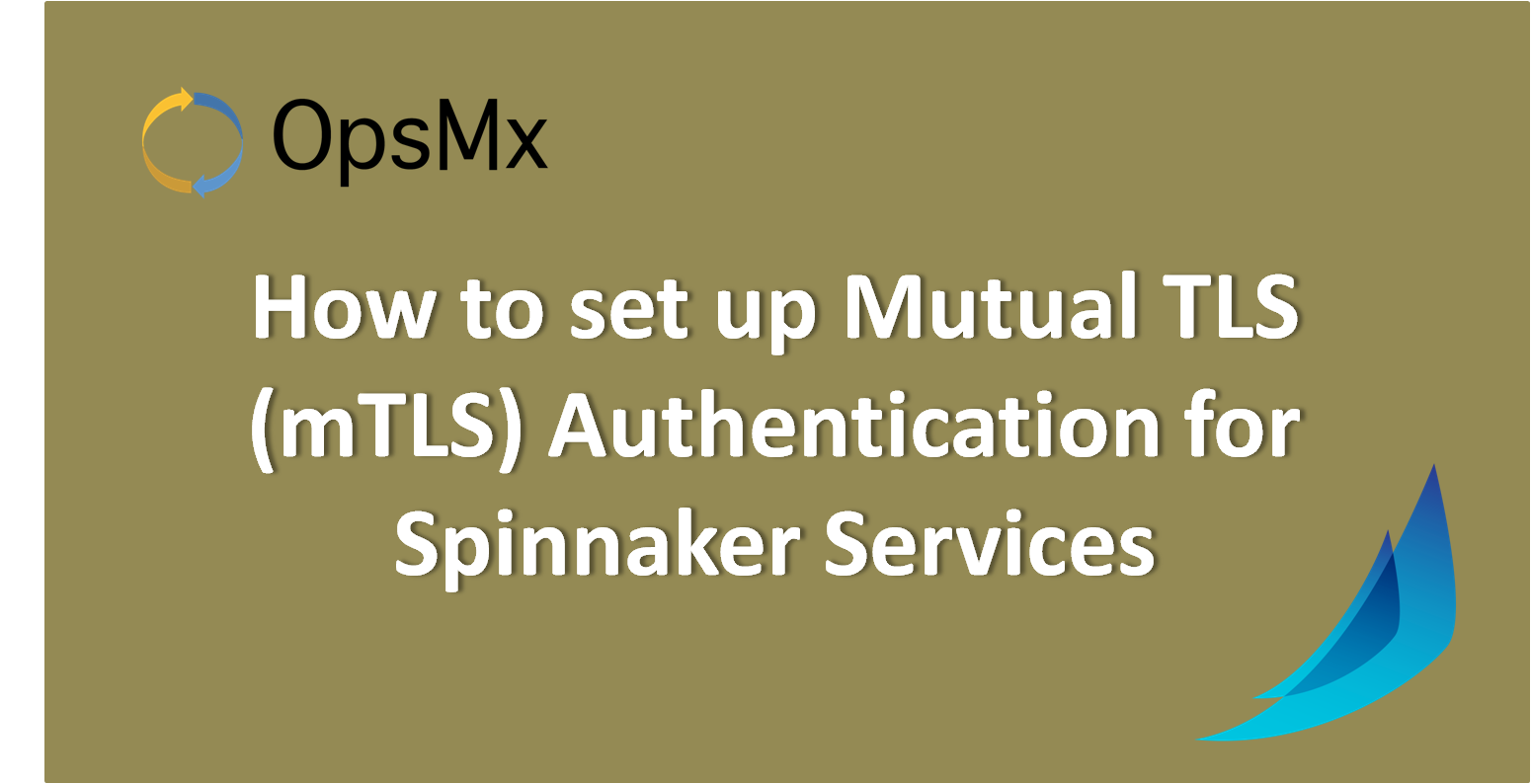Spinnaker services communicate and exchange sensitive data with each other. When TLS (Transport Level Security) is enabled between the services it ensures that all of this data is encrypted. Communication between services happens only when they have valid certificates.
Mutual authentication or two-way authentication refers to two parties authenticating each other at the same time. Enabling Mutual TLS (mTLS) provides an additional layer of security for theSpinnaker services as only validated clients can interact with the services.
When a client connects to a server:
- The server responds with its certificate signed by a valid CA (certificate authorities) and the client validates it.
- The server sends requests for a certificate from the client and validates the same after receiving it.
How to create certificates for mutual tls using cert-manager?
To enable mutual TLS, you need to get a certificate (a type of file) from a Certificate Authority (CA). The cert-manager is a native Kubernetes certificate management controller. It can help with issuing certificates from a variety of CA (certificate authorities) sources, such as Let’s Encrypt, HashiCorp Vault, Venafi, a simple signing key pair, or self-signed. It will ensure certificates are valid and up to date, and attempt to renew certificates at a configured time before expiry. Here’s how you can create certificates using the cert-manager:
Pre-requisites:
Kubernetes, cert-manager
Steps:
- Create a cluster issuer to issue self-signed certificates using the below YAML code with kubectl create -f
apiVersion: cert-manager.io/v1alpha2
kind: ClusterIssuer
metadata: name: selfsigned-issuer
spec:selfSigned: {}
kubectl create -f clusterissuer.yml
kubectl get clusterissuer
- Create a certificate authority(CA) certificate that can use the above self-signed issuer
Change the namespace below to the namespace where spinnaker is installed.
Also, include any other Subject Alternate Names in the dnsNames field.
apiVersion: cert-manager.io/v1alpha2
kind: Certificate
metadata:
name: mtlsca
namespace: spintest
spec:
secretName: cacert
isCA: true
issuerRef:
name: selfsigned-issuer
kind: ClusterIssuer
commonName: mtlsca
dnsNames:
– “*.spintest.svc”
– localhost
kubectl create -f cacert.yml
kubectl -n spintest get certs
kubectl -n spintest get secret
- Create a certificate authority issuer that can use the above ca certificate.Change the namespace below to the namespace where spinnaker is installed.
apiVersion: cert-manager.io/v1alpha2
kind: Issuer
metadata:
name: caissuer
namespace: spintest
spec:
ca:
secretName: cacert
kubectl -n spintest create -f caissuer.yml
kubectl -n spintest get issuer
- Create a certificate using the caissuer.Change the namespace below to the namespace where the spinnaker is installed.
Also, change the dnsNames.
This expects a pkcs12 passphrase in a secret called passphrasesecret.
kubectl -n spintest create secret generic passphrasesecret –from-literal=passphrase=mysecrepassphrase
This secret will be used later in configuring the spinnaker files.
apiVersion: cert-manager.io/v1alpha2
kind: Certificate
metadata:
name: mtlscerts-pkcs12
namespace: spintest
spec:
secretName: mtlscerts-pkcs12
duration: 2160h # 90d
renewBefore: 360h # 15d
commonName: spintest.svc
keystores:
pkcs12:
create: true
passwordSecretRef:
name: passphrasesecret
key: passphrase
dnsNames:
– “*.spintest.svc”
– localhost
usages:
– digital signature
– key encipherment
– server auth
– client auth
issuerRef:
name: caissuer
kind: Issuer
kubectl create -f mtlscerts.yml
kubectl -n spintest get certs
kubectl -n spintest get secret mtlscerts-pkcs12 -o yaml should show ca.crt, tls.crt,tls.key and keystore.p12
kubectl -n spintest get secret mtlscerts-pkcs12 -o jsonpath='{.data.ca\.crt}’ | base64 -d >ca.crt
- From clouddriver pod get the cacerts file:kubectl -n spintest cp clouddriverpod:/etc/ssl/certs/java/cacerts cacerts
keytool -import -file ca.crt -keystore cacerts
kubectl -n spintest create secret generic cacerts –from-file=cacerts
- Make the following changes in spinnaker by exec into halyard pod:
- In /home/spinnaker/.hal/default/service-settings , change svc.yaml ( example echo.yml, clouddriver.yml) to mount secret on to svc and overridebaseurl from http to https:
kubernetes:
volumes:
– id: cacerts
mountPath: /etc/ssl/certs/java
type: secret
readOnly: true
– id: mtlscerts-pkcs12
mountPath: /pkcs12
type: secret
readOnly: true
overrideBaseUrl: https://spin-clouddriver.spintest.svc:7002
# Change the service name, namespace and port accordingly
- In /home/spinnaker/.hal/default/profiles, change svc-local.yml ( example echo-local.yml, clouddriver-local.yml) to add https to server and okHttpClient:
server:
port: 7002
ssl:
enabled: true
keyStore: /pkcs12/keystore.p12
keyStoreType: PKCS12
keyStorePassword: changeit # from the passphrase secret
trustStore: /etc/ssl/certs/java/cacerts
trustStoreType: JKS
trustStorePassword: changeit # from the passphrase secret
clientAuth: need
okHttpClient:
keyStore: /pkcs12/keystore.p12
keyStorePassword: changeit # from he passphrase secret
trustStore: /etc/ssl/certs/java/cacerts
propagateSpinnakerHeaders: true
connectTimeoutMs: 60000
readTimeoutMs: 60000
- In /home/spinnaker/.hal/default/service-settings , change svc.yaml ( example echo.yml, clouddriver.yml) to mount secret on to svc and overridebaseurl from http to https:
- Hal deploy apply after you are done.
Conclusion:
After applying the above configuration changes to your Spinnaker deployment, the Mutual TLS (mTLS) Authentication for Spinnaker Services is enabled thereby making it secure to communicate securely over the network with other services.

0 Comments